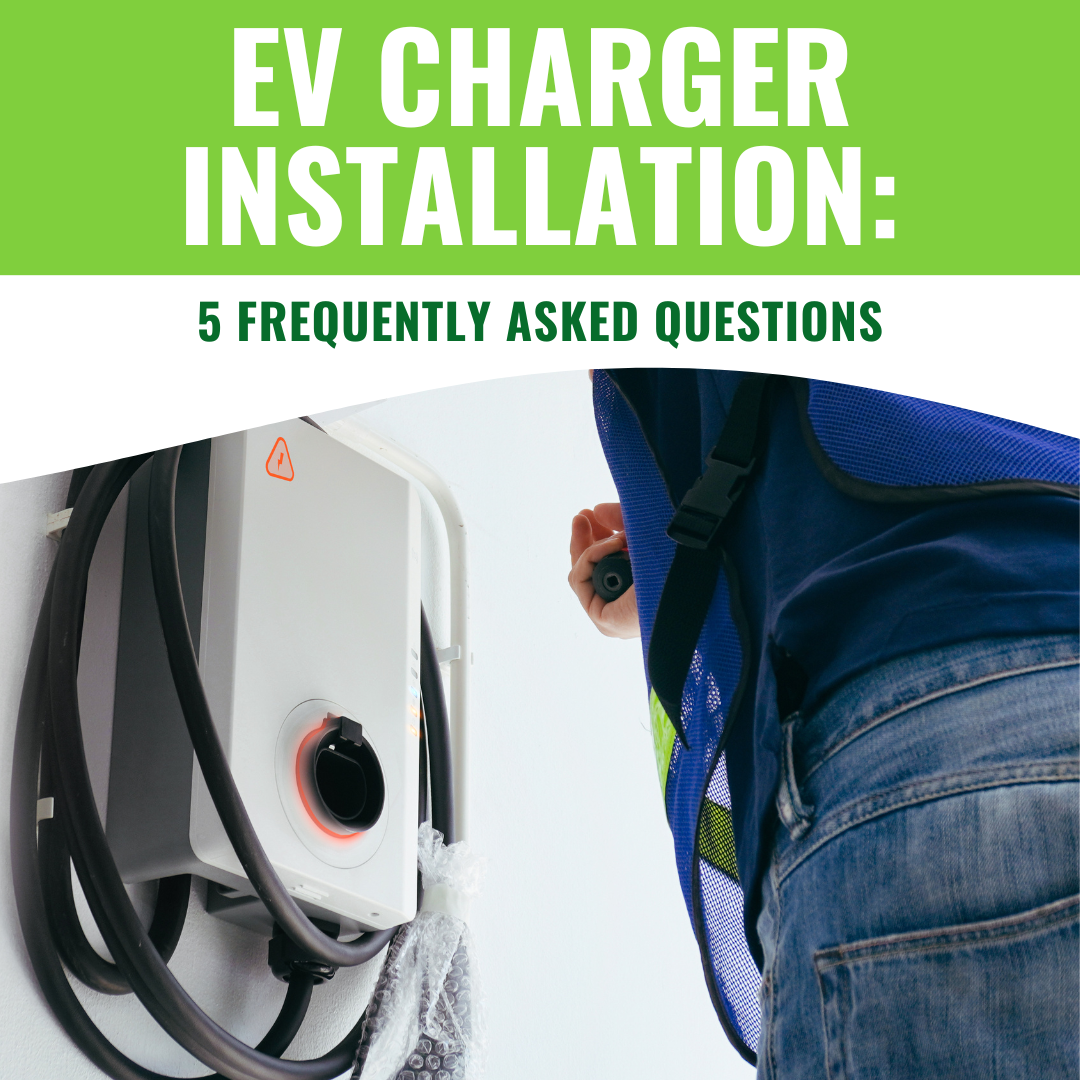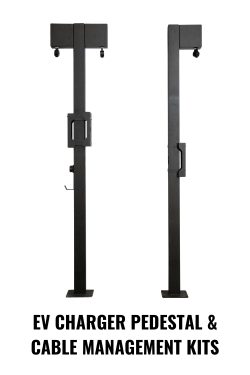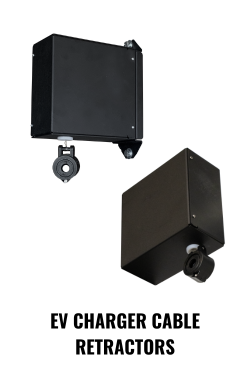We use cookies to make your experience better. To comply with the new e-Privacy directive, we need to ask for your consent to set the cookies. Learn more.
EV Charger Installation: 5 Frequently Asked Questions
More than half of the fleet owners in a 2023 McKinsey survey said they planned to adopt electric vehicles (EVs) by 2027. If you’re thinking of joining them, you probably have questions about EV charger installations.

After all, every EV fleet requires EV charging depots. The first step to building these facilities is understanding the costs and complexities of installing EV chargers. Start your research with answers to five fundamental questions fleet owners ask about EV charger installations.
Once your plans are in place, find the EV Charger Handling Equipment you need at Solus Group. Call us at 314-696-0200 for more answers about EV charger installations.
EV Charger Installation: A FAQ for Fleet Owners
We picked five of the most important questions about EV charger installations for commercial fleets, and went deep on the answers. Here they are, in no particular order.
1. What type of EV charger should you install?
There are three types of EV chargers:
- Level 1 EV chargers, which draw power from standard, 120V convenience outlets. They only give you about five miles per charge-hour.
- Level 2 EV chargers, which require 208V or 240V outlets for faster charging. They might provide up to 25 miles per charge-hour.
- Level 3, or DC fast charge (DCFC) chargers, which use anywhere from 400V to 1,000V DC energy for ultra-quick energy transfer. They pack a punch with up to 240 miles per charge-hour.
Related: EV Charger Levels: Choosing Technology for EV Charging Stations
Fleet owners seeking to electrify should generally install Level 2 technology. A quick look at all three technologies explains why. 
Battery-powered fleets probably won’t depend on Level 1 chargers much. They’re best suited for plug-in hybrid vehicles, due to their slow charge times. Most EVs ship with Level 1 charging cables, which plug into standard, 120V outlets. It usually doesn’t make sense to build dedicated Level 1 charging stations at fleet depots.
Level 2 chargers are a better option. They’re the most common type of EV chargers in public and residential installations. Many commercial-grade Level 2 chargers support fast charging modes. A combination of lower cost (compared to DCFC technology) and adequate charging times make Level 2 chargers your best choice for overnight and between-shift charging. This is probably the main charging solution for EV fleets.
Level 3 chargers are ideal for opportunity charging. If you can afford them, it’s nice to have a small number of these units available to your fleet. But they’re usually too expensive to provide the bulk of your fleet-charging needs. That leads us to our next question.
2. How much does an EV charger installation cost?
In 2019, the International Council on Clean Transportation (ICCT) published a study of charging infrastructure costs in the U.S. These calculations covered the period from 2019 to 2025.
According to the ICCT, the cost difference between Level 2 and Level 3 charger installations was significant. For workplaces (as opposed to residences), hardware costs differed by well over $100,000 per unit.
- Hardware for a networked, Level 2 charger was estimated at $3,127 (and over $300 less if you post two chargers per EV Charger Pedestal).
- Hardware for a networked, Level 3 charger with the highest wattage (350 kW) was estimated to cost $140,000 per unit — without the option to double up on charger stands.
These prices tell you why Level 2 chargers make more sense as the mainstay of your fleet-charging solution. They also only cover the hardware; there are also installation costs to consider.
The ICCT’s calculations showed a big cost difference between Level 2 and DCFC chargers in this area, too:
- For projects with six or more chargers, Level 2 workplaces charger installation costs were estimated at $2,305 per unit outside California, where costs are higher.
- To install between six and 10 Level 3, 350 kW chargers, costs were estimated at $25,654 per unit.
You can see how DCFC technology is great if you can afford it, but will generally offer a much slower return on your investment than Level 2 chargers.
3. What’s the difference between AC and DC EV chargers?
Electric vehicle batteries store energy as direct current (DC). Public electricity grids deliver alternating current (AC), however. Level 1 and Level 2 chargers draw AC from the grid, and pass it on to the EV battery pack.
Your EVs deal with this discrepancy using a device called an onboard charger, which converts AC power to DC. Onboard charger conversion is cost-effective, but leads to slower charging times.
Level 3 chargers take the opposite approach. These units convert AC to DC before it reaches the vehicle, bypassing the work of the onboard charger entirely. It’s a faster approach to recharging the battery pack, but, as we illustrated above, this leads to higher initial costs for the installation.
4. What standards or regulations govern EV charger installations?
Compliance is a key part of any major electrical installation, and EV charging stations are no different. Here are some of the key standards and regulations to check before you begin your project:
- NFPA 70, the National Electrical Code (NEC), Article 625
- The National Electric Vehicle Infrastructure (NEVI) Standards and Requirements
- Local rules, such as building codes, zoning laws, and parking ordinances
Related: A Fleet Owner’s Guide to NEC Article 625: Electric Vehicle Charging Systems
Most EV charging installations also depend on software platforms, which manage your system and provide data that can help you optimize your charging program. This software should comply with certifications like System and Organization Controls Type 2 (SOC 2) and more.
5. What kind of infrastructure does an EV charging station require?
In addition to EV chargers themselves, your installation will require support equipment. These infrastructure elements support the act of charging, and turn an EV charger into a usable EV charging station. 
At minimum, plan to acquire the following EV charger support equipment:
- NEVI-Compliant Signage. The NEVI Standards and Requirements Final Rule requires federally funded EV charger installations to use signs that conform to two federal sources: The Manual on Uniform Traffic Control Devices (MUTCD) and the Code of Federal Regulations (CFR) rules for highway beautification, 23 CFR Part 750.
- Structural Bollards. Local building codes or parking ordinances may specify certain safety barriers, such as bollards, curbs, or tire stops. At the very least, you’ll want to protect your charging equipment from collisions with a pair of bollards.
- EV Charger Pedestals. Level 2 chargers are designed to be mounted on walls or stands. For outdoor installations, choose durable, space-saving EV Charger Pedestals. These free-standing units support one or two chargers; doubling up can save space and costs, as mentioned in Question 2 on this list.
- Cable Management Systems. Charging cables must be kept safely off the ground. Otherwise, they’re vulnerable to being run over and damaged. Cable management systems — ideally self-operating reels — prevent this risk, while creating a more convenient charging experience.
- Integrated EV Charger Pedestals and Cable Management Kits. For best results, choose EV Charger Pedestals with a built-in cable retractor.
These elements will protect your EV charging equipment from damage. They’ll simplify the act of charging your fleet. And they’ll provide a strong ROI by improving safety and efficiency at once.
If you still have questions about how Solus Group can help with your EV charger installation, call the experts at 314-696-0200 today.

